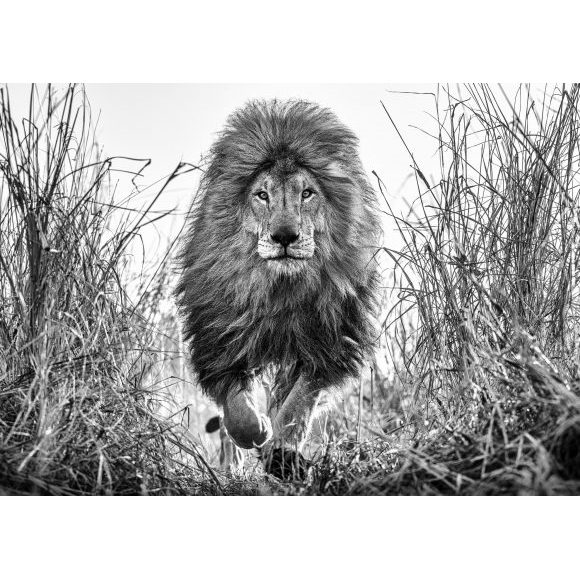Letter From Reykjavík
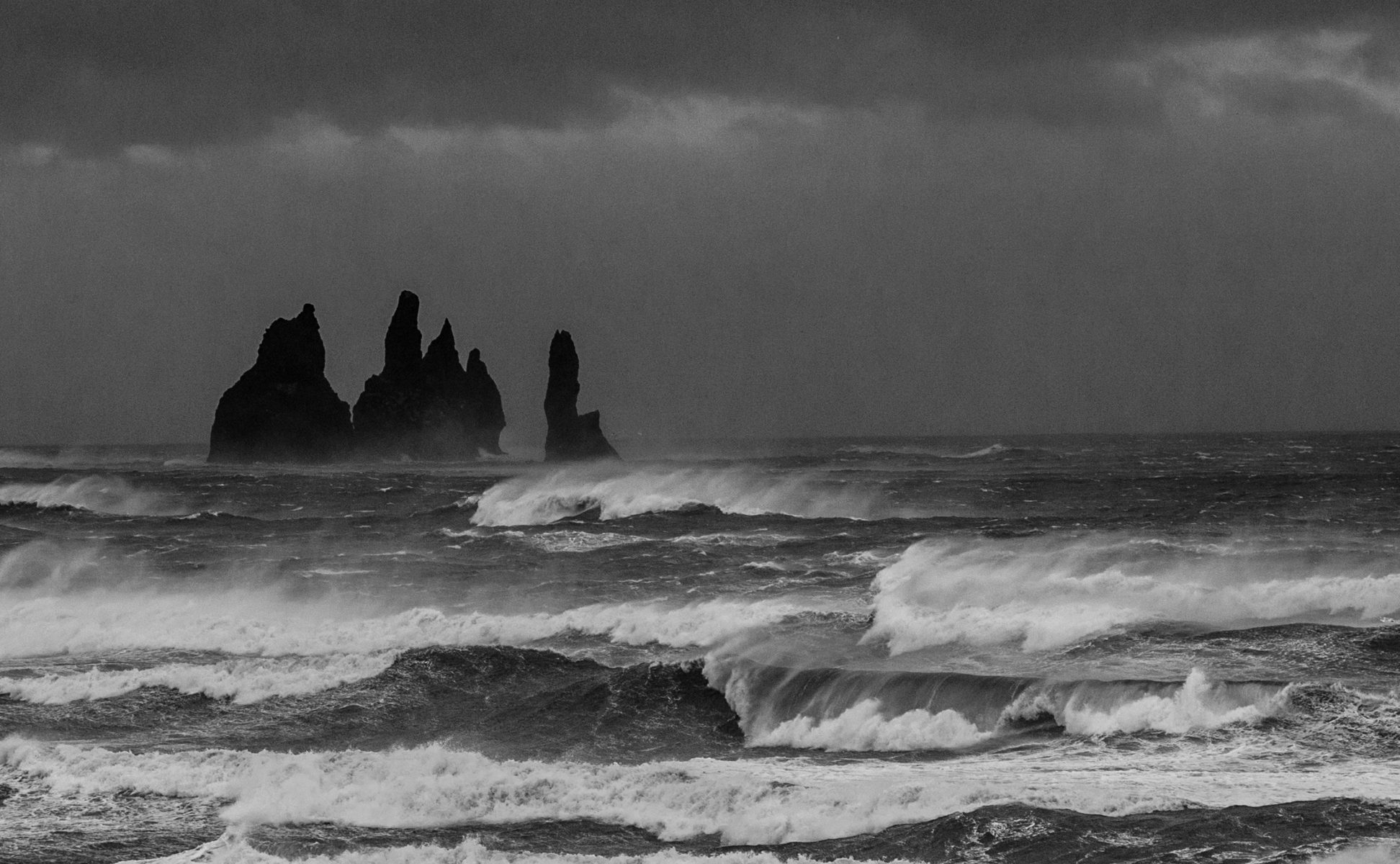
A good insight into anyone’s mind set or general knowledge, is to mention the country Iceland and see where the conversation goes. My son, Cameron, would reply that they are in the 2018 World Cup “Group of Death” with Argentina, Nigeria and Croatia, whilst bankers would be reminded of the country’s dramatic but ultimately cameo role in the global financial crisis and then those in the autumn of their lives might talk about how much they miss Magnus Magnusson on Mastermind. Those in the early summer of their lives may conversely talk of Bjork and maybe even Damon Albarn of Blur.
For the great majority of us, Iceland is made remarkable for the land on which the people live, not the people themselves. This is rather unfair on the tiny population of 337,000 - because they are both literate and linguistic and when they have had a drink, which is normally not long after breakfast, they are most welcoming - in a medieval kind of way.
Iceland’s raw landscape of angry volcanoes, lava fields, glaciers and geysers is the most visually intoxicating cocktail of geological extremes on the planet. No surprise that Games of Thrones has a filming hub in Iceland and the Bond, Star Wars and Fast and Furious franchises have spent small fortunes filming in the country. Both Ridley Scott and Tom Cruise know Iceland better than google maps and I suspect the archetypal millennial’s obsession with science fiction, mythology and fantasy has inadvertently secured Iceland a steady stream of location scouts for many years to come. So long as there is an appetite for Vikings, myths and monsters, let alone car adverts, film production companies in the county will outnumber the banks. Not that that is now a hard comparative.
The lava dominated terrain is so tough that only three people live there per square kilometre. Iceland should not really be part of our planet - I think there is a good chance it’s actually Mars in a witness protection programme. That would be very exciting - FIFA would not be able to contain themselves if they could change the opening game in Group D on June 16th to Argentina against Mars.
One of the great commentator platitudes of all time was in the 1974 World Cup Final between West Germany and Holland. As the teams walked out in Munich, the British commentator - referencing events in 1940 - helped us with “there is a bit of history here”. There is no history between Argentina and Mars, but Planet Earth would down tools to see new history being made. Almost everyone outside Argentina would want Mars to win, because we believe it is probably impossible to play football outdoors on Mars and we do love an underdog.
It was certainly impossible to play football outside in Iceland when I arrived last week. I am not proud to say I have taken 36 plane journeys already this year but this was the first in which, after a perfunctory flight and landing, the BA800 from Heathrow was left alone on the tarmac for 90 minutes for fear of any connecting mechanism damaging the plane. The wind was so ferocious, that trying to offload the bags, let alone the passengers, risked a vehicle on plane collision. And so we sat in our seats and experienced the most vicious aircraft turbulence I have ever experienced despite the engines being turned off and the plane being parked. It’s the first time I have ever been told to refasten my seat belt at a journey’s end. Who needs to take the kids to Alton Towers if they can just find a seat on a stationary plane in Keflavik?
Every day - 365 days a year - Iceland is invaded by photographers - make no mistake - the secret is out. Photography enfranchises everyone and everyone deserves the right to take a good picture - indeed anyone can. I would bet that if there was a ratio of national population to annual visitor Instagram posts, Iceland would win by such a distance that the silver and bronze medal winners would be embarrassed to be on the same podium.
I have been to Iceland nine times in my career as a photographer and once on a stag weekend. To the best of my recollection, all were quite intense trips that involved very little sleep. Unfortunately, whilst I have taken some reasonable photographs up there, all were from the stag weekend and can never be printed.
I have in the past struggled on assignment in the country because I failed to fully convey the enormity and rawness of the landscape. The cognitive processing of the minute by minute visuals either side of the ring road around Iceland is challenging and it probably requires a few disappointments to really get it right. My contextual pictures of Icelandic horses before this trip have been nice rather than spectacular and I, for one, loathe the word “nice”.
When I go to East Africa I want to take images that have a serenity and calmness. I don't capture predation, I prefer
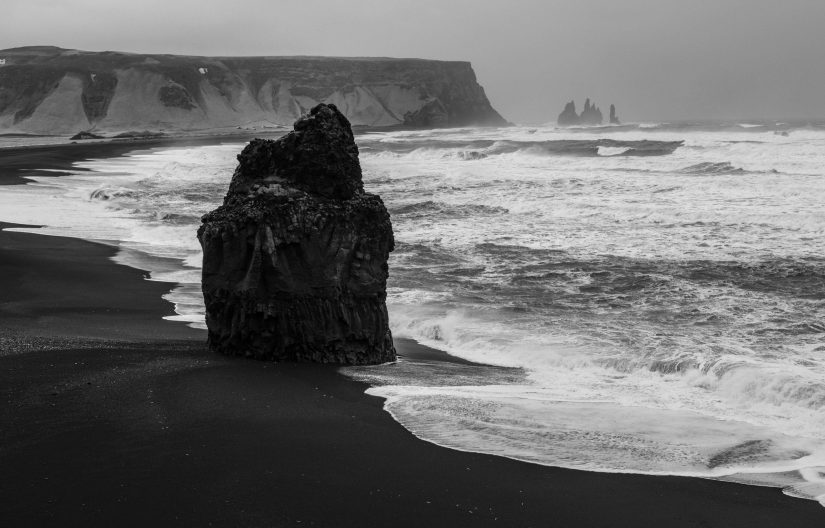
to capture animals just being animals. Previously, I made a mistake by repeating that approach in Iceland. Iceland is not serene - it is angry, wild, raw and dynamic. Therein lies the clue - big images of Iceland probably need to have Majored on these characteristics. The very best tennis players adapt their game to exploit their opponent’s game and filmmakers must also adapt to circumstances as they find them.
If the signature drink in Kenya’s Masai Mara is a gentle Sundowner taken in a colonial deck chair as the sun calmly sets before you, in Iceland, the happy hour drink has to be a Flaming Sambuca which is delivered into your mouth and surrounding facial detail by a 60 mile an hour wind. To continue the metaphor, it would be appropriate at this moment if your hair catches fire and you throw up. Only
then have you paid due homage to the raw splendour of Iceland.
When I stepped off the plane and was nearly blown to the Faroes, I whiffed a golden opportunity. If the wind kept up we would have “wild and raw” for sure and furthermore, if tourist buses were banned from the roads, which they were, we could get exclusive access to some special locations.
As it turned out, I think we are returning home with two exceptional images - maybe the two strongest images I have ever taken in Iceland. It happens in recreational fishing up here too, they come up trying to catch a prize salmon and return every time empty handed. But then, maybe through luck and a little remedial action, they come up again and land two monsters in 48 hours.
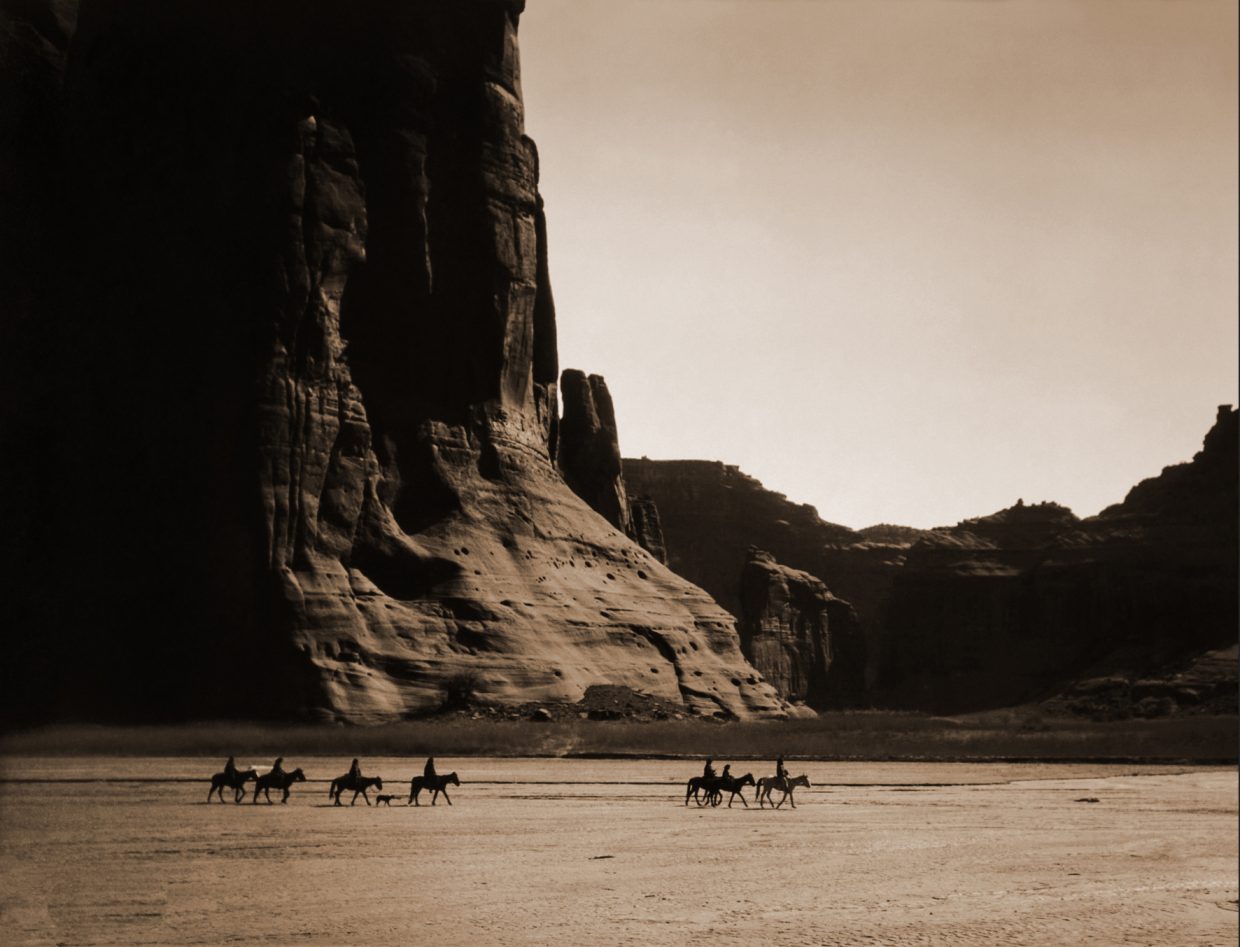 Edward Curtis has always been a hero of mine and his century old work, Canyon de Chelly (above), no doubt influenced my approach in Iceland.
Edward Curtis has always been a hero of mine and his century old work, Canyon de Chelly (above), no doubt influenced my approach in Iceland.
True North Productions has been our fixer in Iceland for several years and they work regularly with local horse owners all around the island. It seemed much more sensible to work with horses that roam close to the area of each specific shoot rather than drag the same stable of horses all over the country. They are also experts on regular (every 30 minutes) regional weather forecasts and regional can be very regional in Iceland. Two miles can make a material difference. Fixers are an integral part of our game and we are not shy of employing them wherever possible - if they can help a potentially good picture become a great picture through local knowledge, they are invaluable.
I often tell aspiring photographers to find heroes in the craft - deceased artists that excelled and left a legacy or working photographers still producing great work. I have many in both still photography and cinematography. These masters span 100 years and start with the iconic work of Edward Curtis - the legendary American photographer who, over 100 years ago, chronicled the lives of Native Americans. His work, which I have seen in private collections in homes in Santa Fe and Springfield Missouri, is deeply evocative and offers the most creditable documentarian of Native Indians in the American West. I would greatly love to own an original Curtis and it was uplifting to detect the pride the collectors in New Mexico and Missouri have in their ownership.
I am mesmerized by one particular Edward Curtis shot - the horseback riders in Canyon de Chelly - which he took in 1904. This famous work encapsulated the American west in the same way John Ford did 40 years later with the moving image. There is a sense of place and a quite deliberate emphasis of scale. It shows the enormity and beauty of the deserts of Arizona and no picture better conveys the era of glory for the final frontier. Curtis was way ahead of his time and now this image is precious.
I have contemplated going to the same spot in Arizona and trying my own version - after all everything is still there other than the seven riders - but I am not sure of the merit in this. It would spank of plagiarism and whilst it is healthy to be obsessed with the work of others, it is neither courageous nor creative to copy. Maybe I should just visit the location without a camera in my hand. It was an unresolved dilemma in my mind and I had put the whole issue in a “down the line” silo.
Last week, 50 miles east of the volcano that erupted so sensationally in 2012, my fixers took me to a location I never knew about. It was spellbinding and no wonder the Star Wars team had only recently left. It offered a spontaneous chance to take an image that was inspired by Edward Curtis' 115 years ago. As with Arizona, Iceland boasts topography that shouts for attention and empathetic portrayal. Without capturing a true sense of scale, the immensity of the landscape is suppressed and just as he had done in the canyon, horses were my tool too.
I am not sure whether it is a commercial photograph, but I do know that scholars of Curtis’s work will feel that he has influenced my composition. The location is a visual double take - I was right back on Mars. Cameras may have come a long way since 1900 but they are just a conduit and don't change what’s in front of the eye. I can’t help but think that Edward Curtis would have done a great job in Iceland - but we will never know.
I finish this month with a strong recommendation - if anyone is taking the ring road around Iceland and stops at an N1 petrol station to fill up, take a breather or merely to use the facilities, pick up the shrimp and mayonnaise sandwich. From the outside it looks fairly unremarkable, but it is possibly the most enjoyable use of £3 that I can remember. We became so addicted, we would have gone around the island twice.
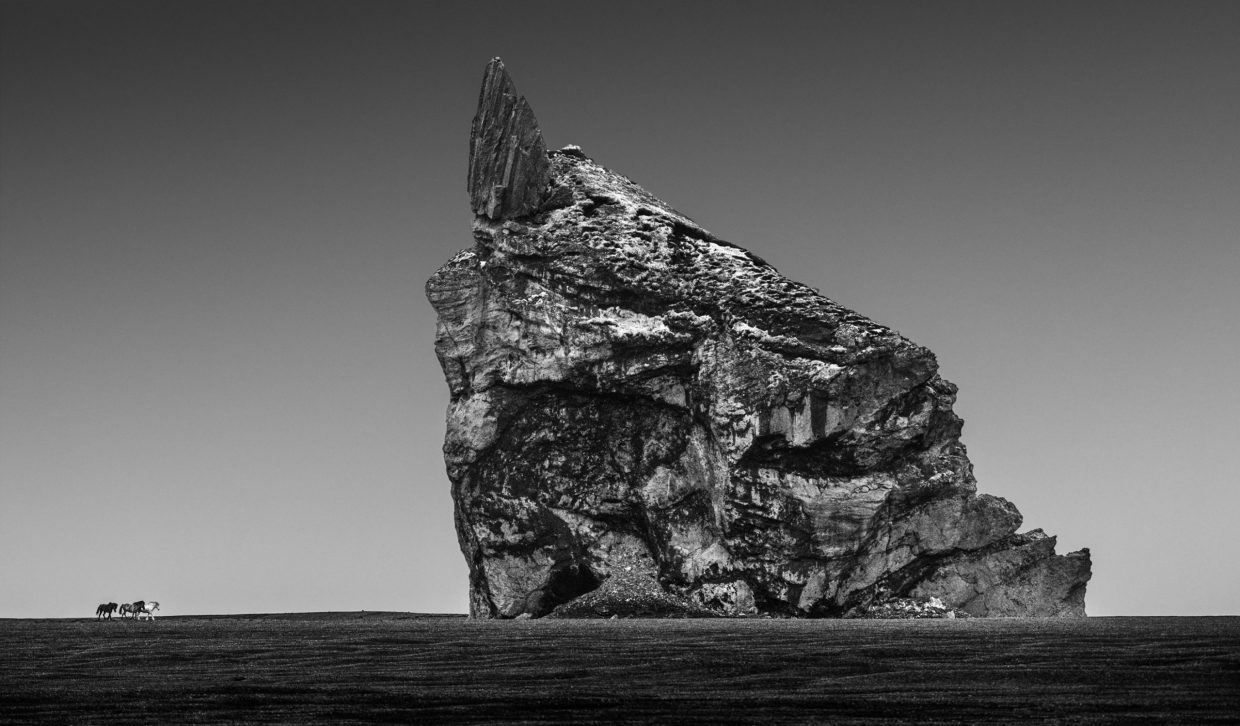 Ode to Curtis - prints available
Ode to Curtis - prints available




